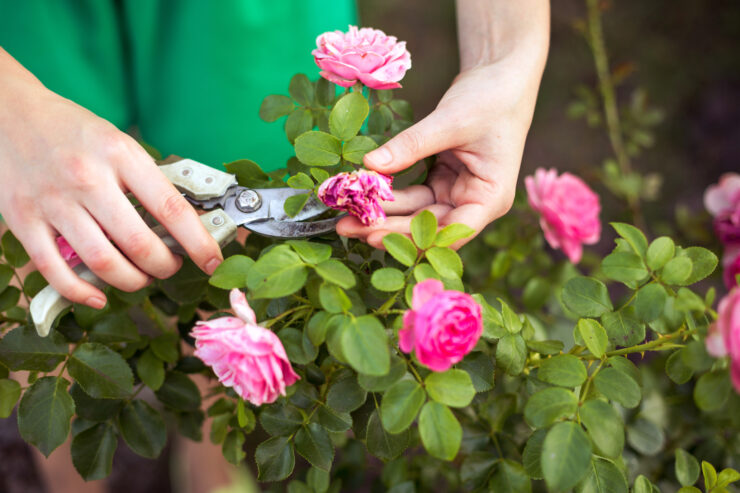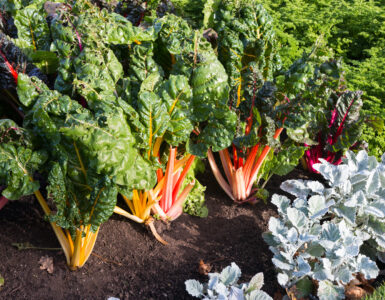Spring pruning is an important step to keep your yard looking pretty.
Now that the sunshine is back, it’s time to grab your shears.
Horticulturist and florist Jessica Berrett shared what to cut back, what to leave alone, and some simple techniques to keep your whole yard looking great.
Pruning is important for keeping your plants healthy and beautiful. “Pruning helps to remove some of the dead material on plants. It helps to redirect the plant’s energy into putting out the fresh, new, beautiful leaves and flowers that we appreciate and helps keep them tidy and neat in our yard,” Jessica explained.
When to Prune
Timing is important to think about when it comes to pruning. “If a plant blooms June or before, we want to hold off because these plants are blooming on stems and wood that they grew last year,” Jessica advised. It’s best to wait until after they have finished blooming to prune them. Any plant that is blooming right now, including lilacs, should be pruned after they bloom.
Pruning Roses
Spring is the perfect time to prune roses. “For the most part, I like to prune them all just about 12 to 18 inches high,” Jessica recommended. If you want them to take up a larger amount of space, you can leave them bigger, but for the most part, this height is ideal for maintaining healthy and beautiful roses.
“Cut out the dead stuff. Anything that looks bad on the plant right now, go ahead and remove it,” Jessica instructed. It’s a small, but important step.
Ornamental Grasses
Ornamental grasses can be left during the winter, but spring is the time to tidy them up. “If they look nice and kind of green right now, I actually don’t even cut these back. I rake out the dead leaves with a rake, but otherwise these don’t need to be cut back at all,” Jessica explained.
However, if the grasses look dead, cut them down to a few inches tall to allow new shoots to emerge. “ That means they’ve gone dormant and this is the time to cut them down,” Jessica said.
Perennials
Spring is when perennials start to put up new shoots. “We can just remove some of the dead materials to make room for the new leaves to grow,” Jessica advised. This helps perennials, like hostas, daylilies, and coneflowers, to make room for the new shoots to come up.
Shrubs and Trees
Shrubs and trees require specific pruning techniques. Most are going to be spring blooming (which you’ll want to wait to prune), but for summer blooming shrubs, like Russian sage and blue beard, it’s the perfect time to trim off dead material and shape them. “You can see some of last year’s growth lingering at the top and we’ve got fresh growth coming out at the bottom. So this is a perfect time to trim off some of this dead material on the edges and shape those the way we want, and they’ll bloom later this summer,” Jessica explained.
Hydrangeas can also be cut back to around 12 to 18 inches. “ There’s a few different types of hydrangeas, but most of the ones that we grow in Utah are perfect to be cut back right now,” Jessica said.
Evergreens
Evergreens with leaves, such as boxwood, can be lightly shaped in spring. “This is a perfect time to give them a little shaping,” Jessica noted. If you have plants where you can see the new growth, you can trim it back into its regular shape.
Tools for Pruning
Jessica recommended what is called bypass pruners. They are the type where the blades crisscross each other, or bypass each other. “These are the healthiest for our branches and our stems,” she said.
If you’re cutting larger material, you might need a larger tool. “ The same thing goes for loppers. We want to look for those that have the blades that crisscross each other,” Jessica explained.
Electric-powered bypass pruners are also a great option for larger stems. “ Multiple companies are making these now. So… if you already have a battery system at your house, look and see if that company makes one,” Jessica recommended.
Maintenance Tips
Maintaining your tools is also important Jessica suggested using a wire brush and sharpening tools to keep blades sharp. Lubrication with plant-based oil like camellia oil is also helpful.
Find more advice from Jessica on Instagram at @plant.geek, or contact her through Sunline for private landscaping services.















Add comment